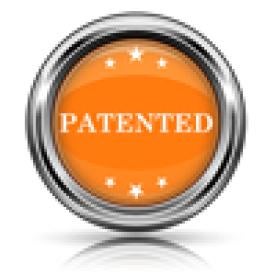Takeaway: The Board will not construe claim terms when it is not necessary to determine the scope of those terms for its analysis.
In its Decision, the Board determined that Petitioner had established that U.S. Patent No. 5,569,082 is a covered business method patent and that it is more likely than not that all challenged claims (claims 1-17) of the ’082 patent are unpatentable under 35 U.S.C. § 101. The ’082 patent relates to “administrating, operating, and playing of a game in which a player acquires a chance to win and the outcome of that chance is displayed in an interesting, fun, and exciting fashion,” including a “personal computer lottery game.”
The Board began by considering Petitioner’s standing to petition for a covered business method patent review. Section 18(a)(1)(B) of the AIA limits CBM reviews to persons, or their privies, that have been sued or charged with infringement of a CBM patent. Each of the Petitioners was sued for infringement of the ’082 patent in related district court cases; therefore, the Board found that Petitioner had standing to seek review.
The Board then turned to claim interpretation. Petitioner suggested constructions for the terms “game piece,” “gaming piece,” and “amusement piece.” The Board explained that the Phillips claim construct standard used in district court litigation applied because the ’082 patent is expired; however, it determined that it was not necessary to determine the scope of these terms for its analysis.
Next, the Board considered whether the ’082 patent is a covered business method patent. A “covered business method patent” is one that “claims a method or corresponding apparatus for performing data processing or other operations used in the practice, administration, or management of a financial product or service, except that the term does not include patents for technological inventions.” AIA § 18(d)(1); 37 C.F.R. § 42.301(a).
Petitioner argued that the challenged claims encompass financial products or services because they are “directed at lottery games, which the ’082 patent describes as financial in nature.” The Board noted that it “understand[s] a lottery to mean “a method of raising money by selling numbered tickets and giving a proportion of the money raised to holders of numbers drawn at random.” After reviewing the evidence and argument presented in the Petition, the Board concluded that “[t]he claims at issue are drawn to methods and systems for computer assisted playing of lottery games. As read in light of the Specification, the instant claims are applicable to—and indeed contemplate—situations wherein players will pay to acquire a game piece and receive a monetary payout when the computer display indicates a winning ticket” and, thus, “at a minimum, independent claims 1 and 10 are financial in nature, incidental to a financial activity or complementary to a financial activity.” Accordingly, the Board determined that at least one challenged claim satisfies the “financial product or service” requirement of Section 18.
The Board also was persuaded that the patent is not for a technological invention. When determining whether a patent is for a technological invention, the Board considers “whether the claimed subject matter as a whole recites a technological feature that is novel and unobvious over the prior art; and solves a technical problem using a technical solution.” 37 C.F.R. § 42.301(b). Petitioner argued that “the claims recite a generic computer system, processor, to implement a well-known game of chance and, according to the Specification, address non-technical problems associated with traditional lotteries such as “(a) the low level of excitement that is generated from the display of the games outcome; (b) the fact that it takes just a few moments to play the game; [and] (c) insufficient player interaction.”
Turning to Petitioner’s asserted ground of unpatentability, the Board then applied the “Mayo framework” in considering whether claims 1-17 are directed to abstract ideas that are not patentable under 35 U.S.C. § 101. Petitioner asserted that the challenged claims are drawn to the abstract idea of “using an amusing game to reveal the results of a lottery game.” The Board found that “the underlying concept of a lottery is, like the concept of risk hedging in Bilski and intermediated settlement in Alice, an economic practice long prevalent in our system of commerce.” Indeed, the Board noted that “lotteries have been used for raising money for centuries.” Accordingly, the Board was “persuaded that Petitioner has demonstrated adequately that claims 1–17 are directed to the abstract concept of using an amusing game to reveal the results of a lottery.” Next, the Board considered whether the claims “recite an ‘element or combination of elements that is ‘sufficient to ensure that the patent in practice amounts to significantly more than a patent upon the [ineligible concept] itself.’’” The Board determined that Petitioner had “established sufficiently for purposes of this decision that the features of the challenged claims are nothing more than the application of an abstract idea on a computer through ‘well-understood, routine, conventional activity’” and that “all steps in the claimed methods reflect mental processes that could be executed as dialog and common human interactions.” Accordingly, the Board concluded that “Petitioner has demonstrated that claims 1–17 are more likely than not directed to patent ineligible subject matter under 35 U.S.C. § 101” and instituted a CBM patent review for all challenged claims.
International Internet Technologies, LLC v. Sweepstakes Patent Co., Ltd.,CBM2015-00105
Paper 7: Decision on Institution
Dated: July 29, 2015
Patent: 5,569,082
Before: Trenton A. Ward, Stacey G. White, and Robert A. Pollock
Written by: Pollock
Related Proceedings: Sweepstakes Patent Co. v. Chase Burns, No. 6:14-CV-151-ACC-KRS (M.D. Fla.), and Sweepstakes Patent Co. v. Chase Burns, No. 0:14-CV-62351-JEM (S.D. Fla.); Sweepstakes Patent Co v. Mosley, Case No. 0:14-cv-62354-DMM (S.D. Fla.); CBM2015–00106



 i
i

